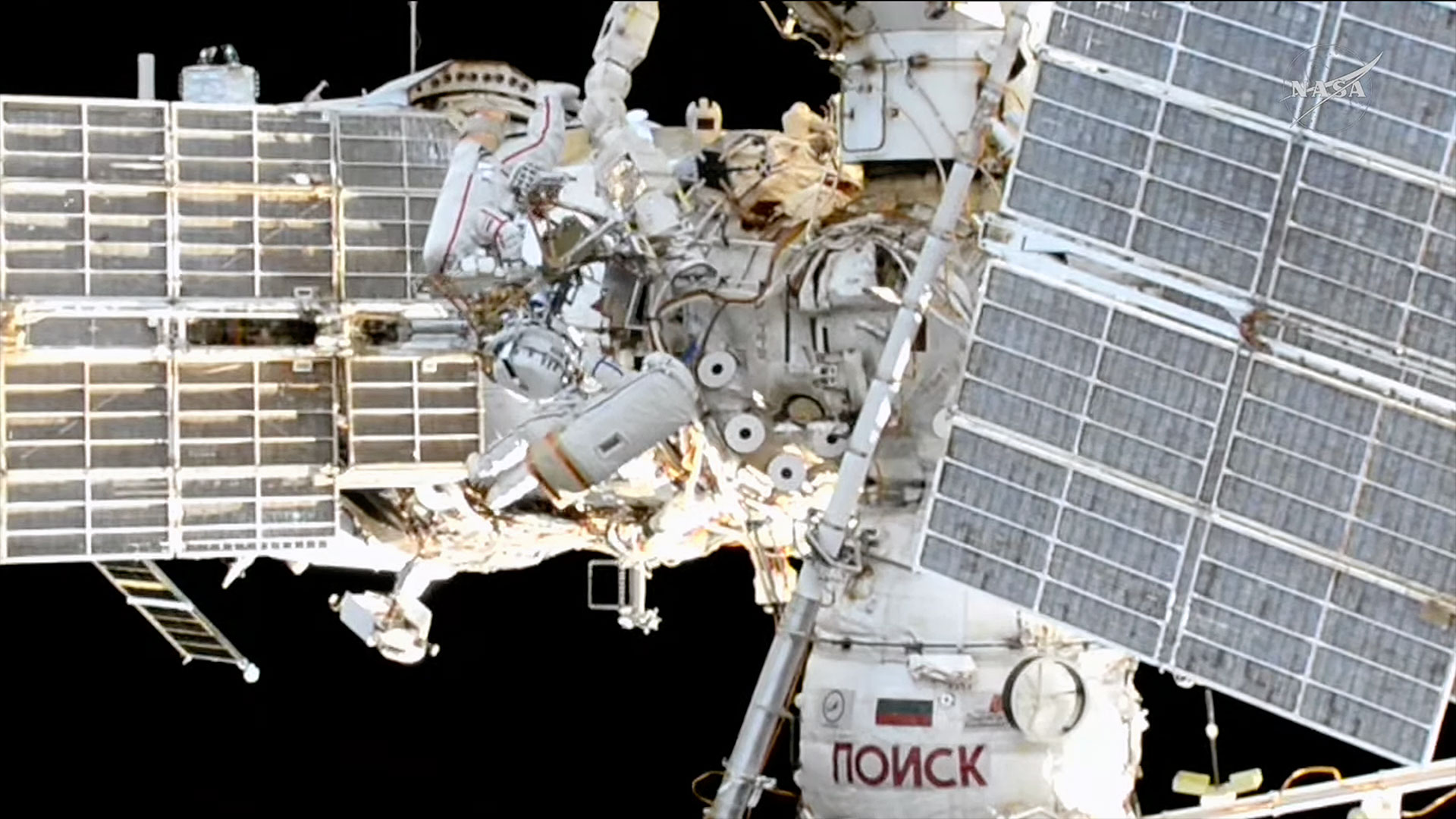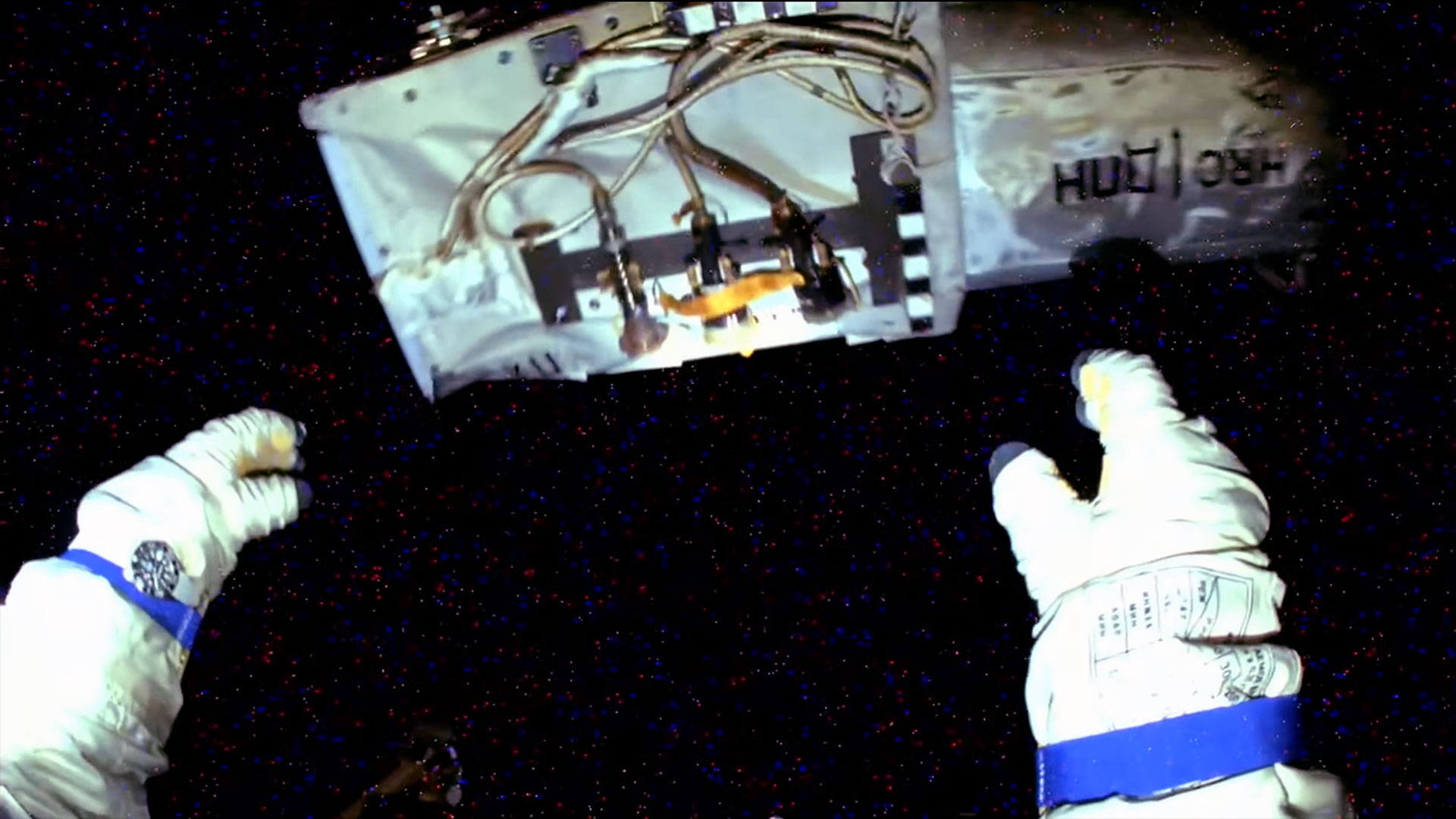Russian cosmonauts install semiconductor experiment, jettison old HDTV camera during spacewalk outside ISS
Sergey Ryzhikov and Alexey Zubritsky spent six hours working in the vacuum of space on Thursday (Oct. 16).

Two Russian cosmonauts are back inside the International Space Station after conducting a spacewalk to install a semiconductor materials experiment, as well as retrieve and jettison a no-longer-needed camera from the exterior of the orbiting complex.
Expedition 73 commander Sergey Ryzhikov and flight engineer Alexey Zubritsky, both with Russia's federal space corporation Roscosmos, marked the end of their first extravehicular activity (EVA) together at 7:19 p.m. EDT (2319 GMT) on Thursday (Oct. 16). The two cosmonauts reentered the Poisk module's airlock and closed the hatch behind them, 6 hours and 9 minutes after they began the spacewalk at 1:10 p.m. EDT (1710 GMT).
After configuring their tools, the two crewmates made their way to their first worksite, outside of the Nauka multipurpose laboratory module. Ryzhikov held onto the Ekran-M, or Molecular Beam Epitaxy experiment, while riding at the end of the European Robotic Arm (ERA), which was driven by cosmonaut Oleg Platonov from a workstation inside the space station.
Ryzhikov and Zubritsky installed the drum-shaped unit, ran power cables and mounted a swappable cassette. The experiment is intended to demonstrate the ability to produce very thin materials — too thin to be made reliably on Earth — that can go from the microgravity environment of outer space to being used in semiconductors.
Their primary task completed, Ryzhikov and Zubritsky then made their way to the Zvezda service module to remove and dispose of a high-definition television system that was originally a part of a Canadian commercial payload. Zubritsky then stood a the end of the European Robotic Arm and tossed the camera overboard, toward the rear of the space station, ensuring it would not come back in contact with the outpost.
"It is going so well," radioed Zubritsky as the camera disappeared into the shadow of Earth. "Jettison is complete."

Given its relatively small mass (180 pounds, or 82 kilograms) and volume (2 by 4.6 by 2.3 feet, or 0.6 by 1.4 by 0.7 meters), the jettisoned equipment will fall back to Earth and be destroyed during its reentry into the atmosphere.
Breaking space news, the latest updates on rocket launches, skywatching events and more!
Ryzhikov and Zubritsky also cleaned a window on the service module before heading back to the Poisk module, picking up an exposed material samples experiment to bring back with them into the space station.
Thursday's spacewalk was the second for Expedition 73 and the 276th in support of the International Space Station's assembly and maintenance since 1998. It was Zubritsky's first EVA and the second for Ryzhikov, who now has logged a total of 12 hours and 57 minutes on his two spacewalks.

Robert Pearlman is a space historian, journalist and the founder and editor of collectSPACE.com, a daily news publication and community devoted to space history with a particular focus on how and where space exploration intersects with pop culture. Pearlman is also a contributing writer for Space.com and co-author of "Space Stations: The Art, Science, and Reality of Working in Space” published by Smithsonian Books in 2018.
In 2009, he was inducted into the U.S. Space Camp Hall of Fame in Huntsville, Alabama. In 2021, he was honored by the American Astronautical Society with the Ordway Award for Sustained Excellence in Spaceflight History. In 2023, the National Space Club Florida Committee recognized Pearlman with the Kolcum News and Communications Award for excellence in telling the space story along the Space Coast and throughout the world.
You must confirm your public display name before commenting
Please logout and then login again, you will then be prompted to enter your display name.

